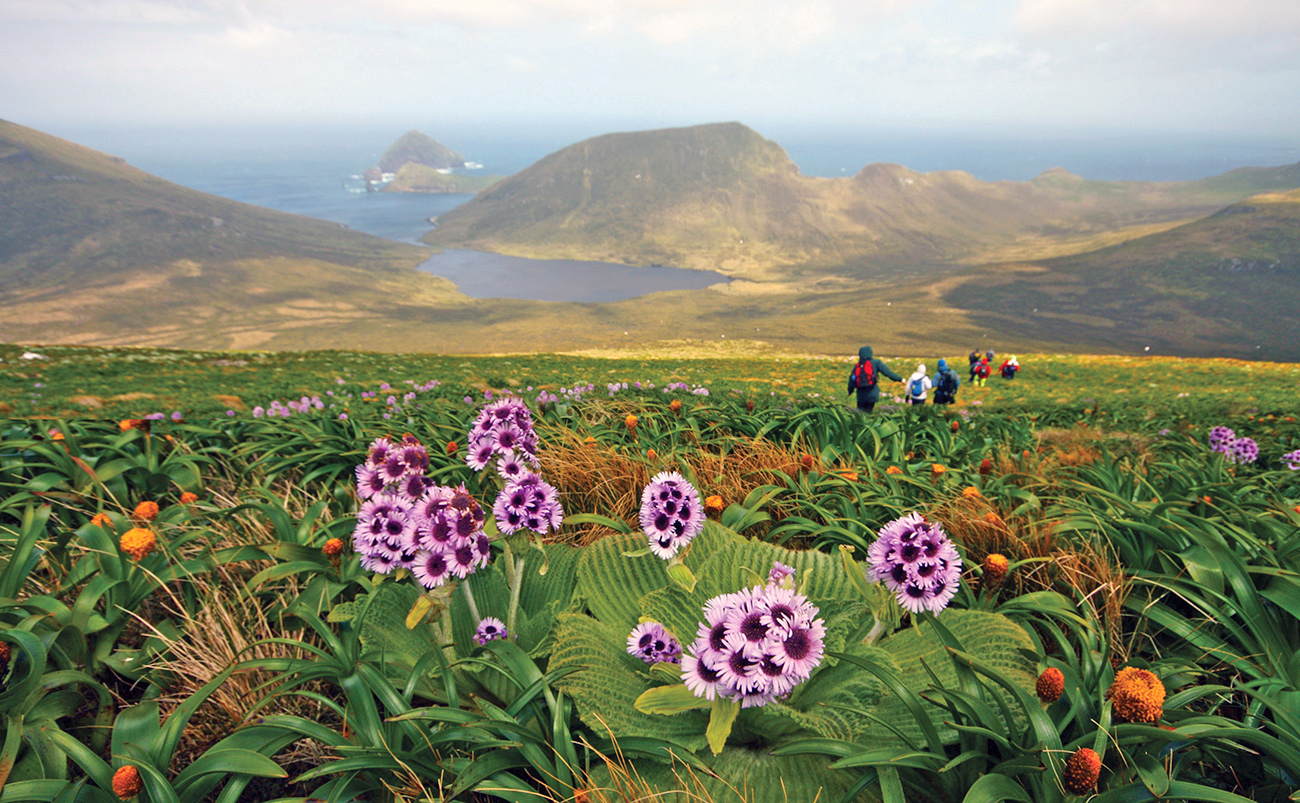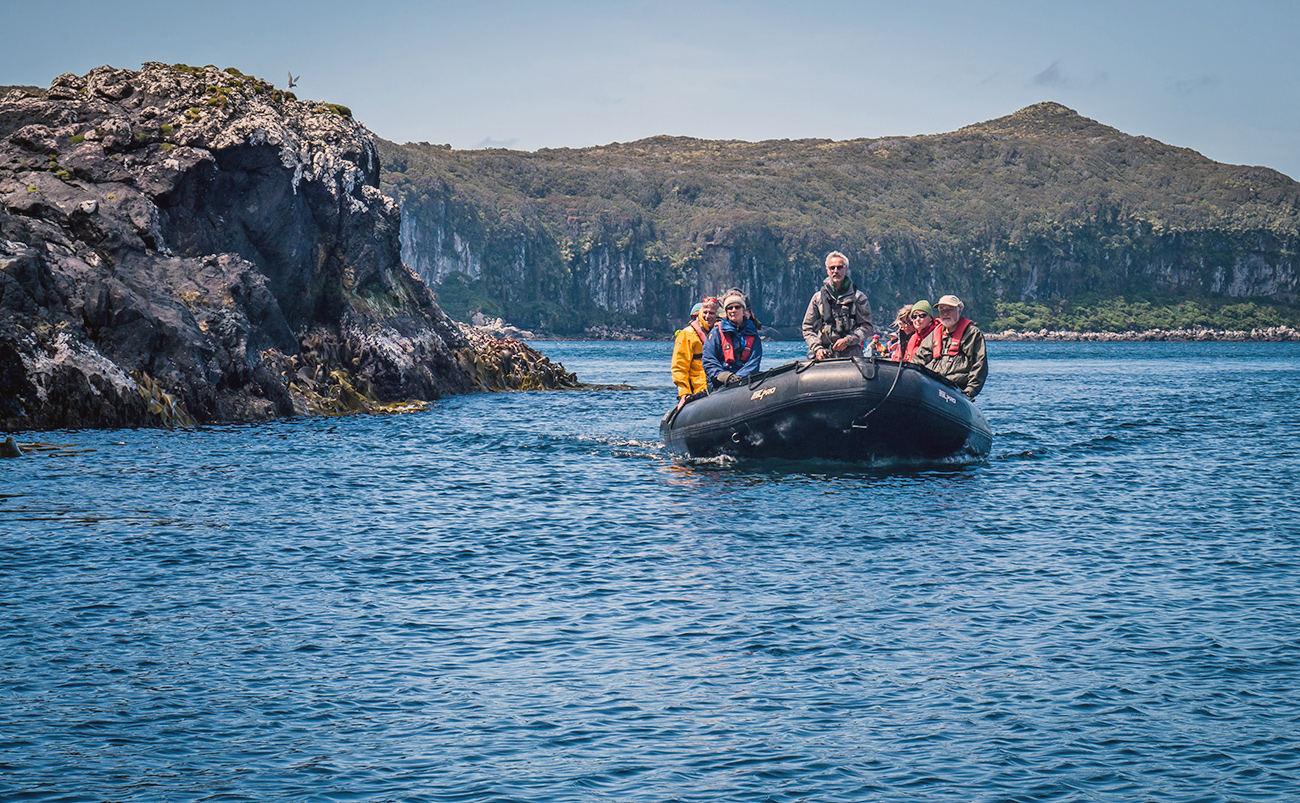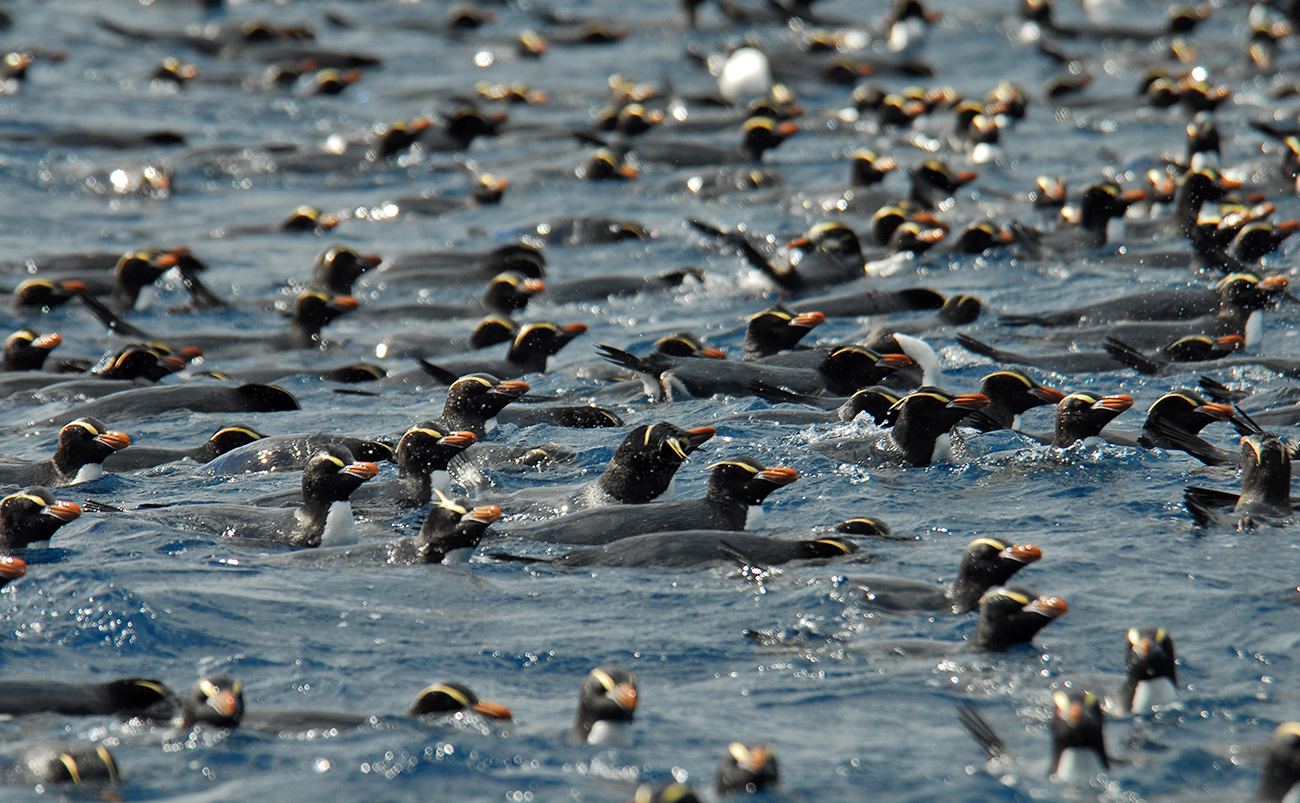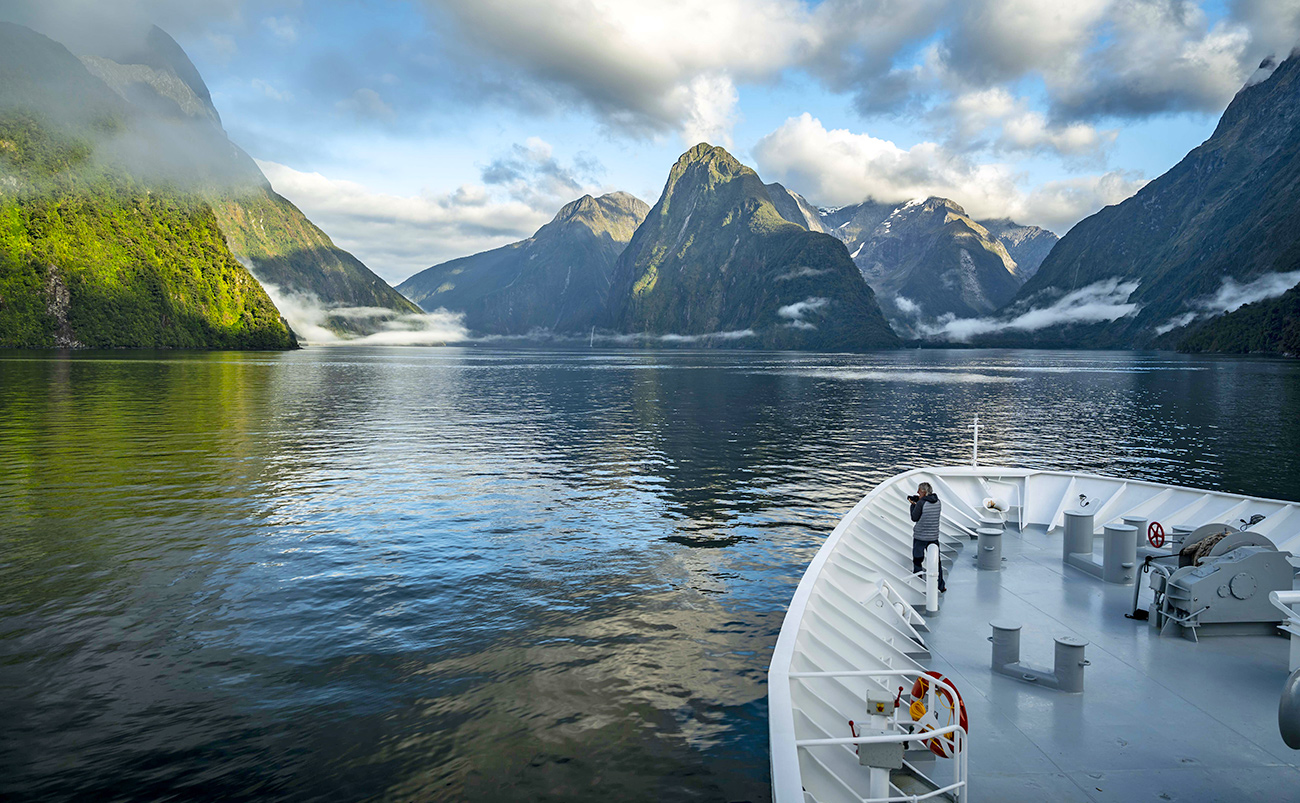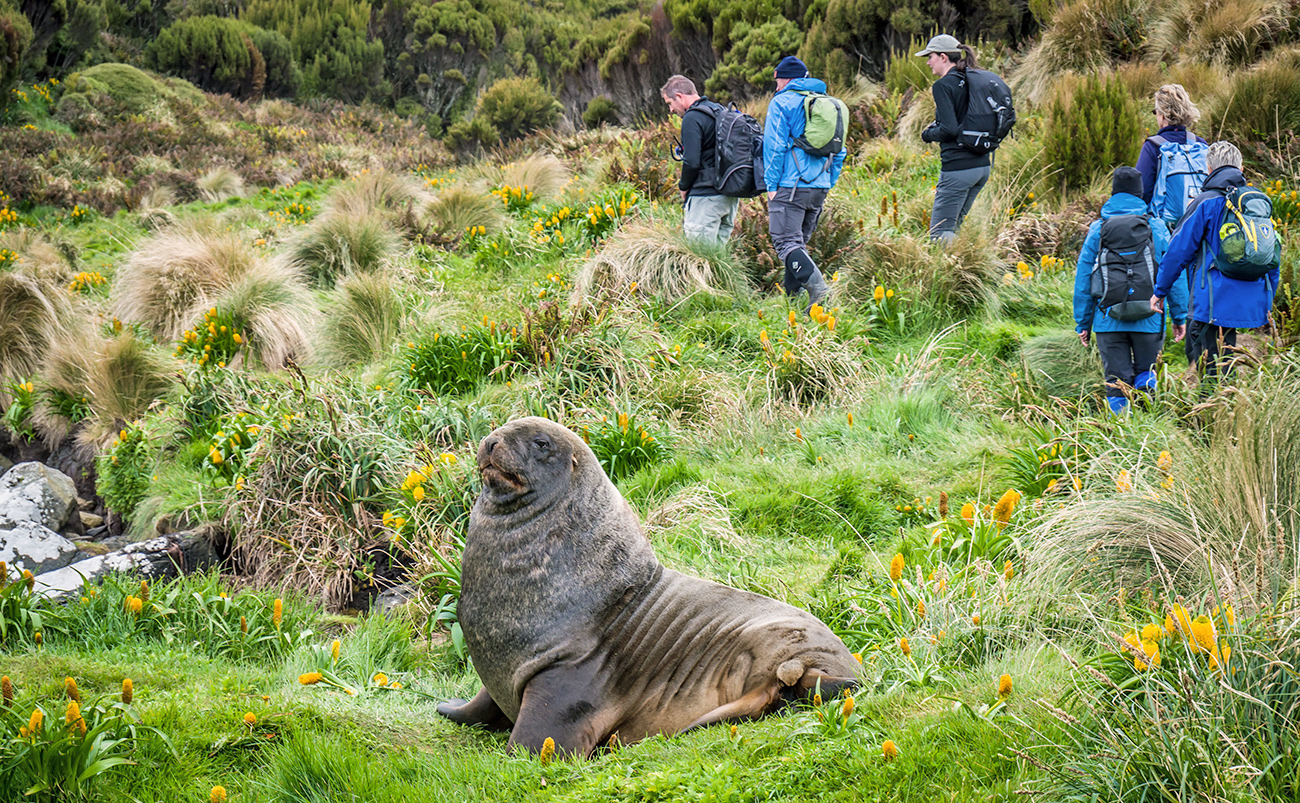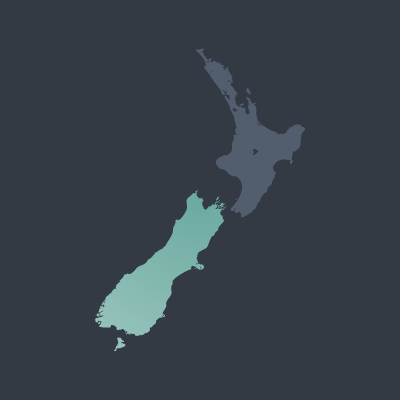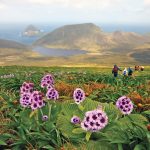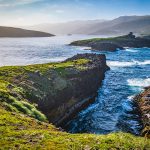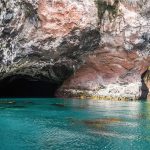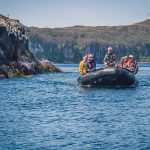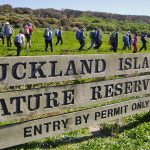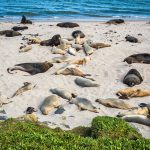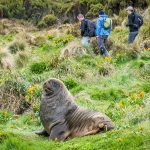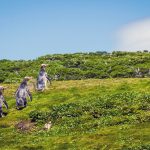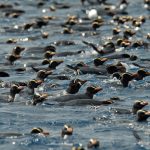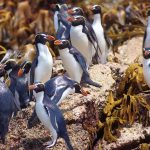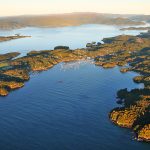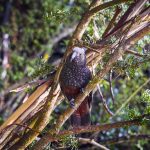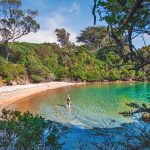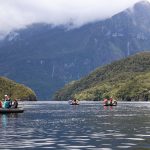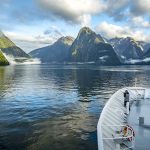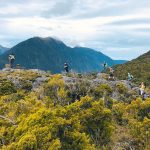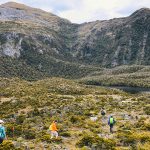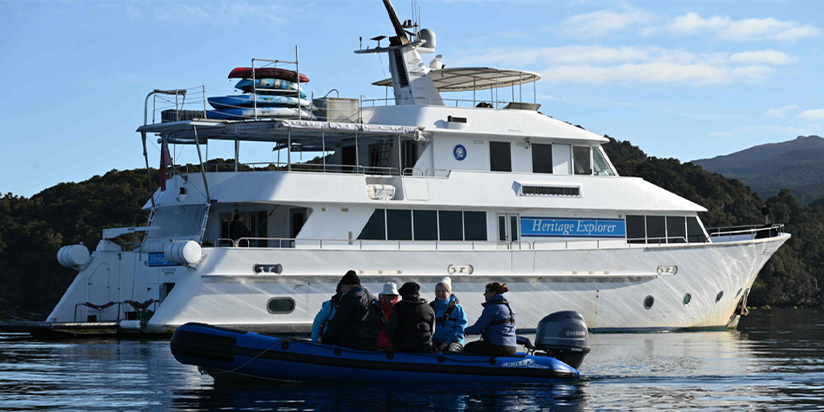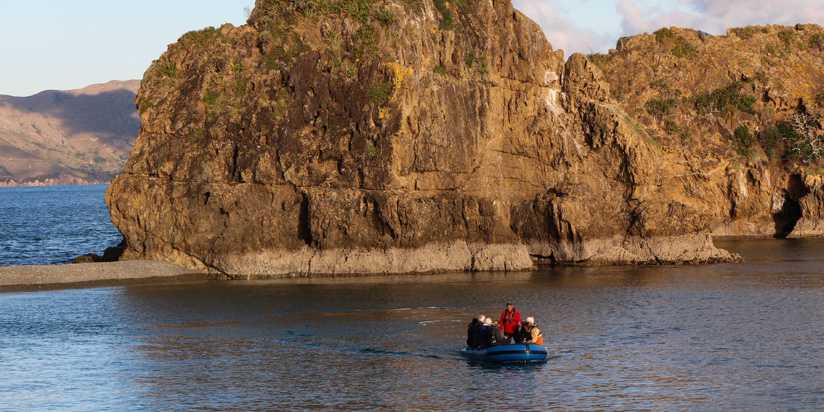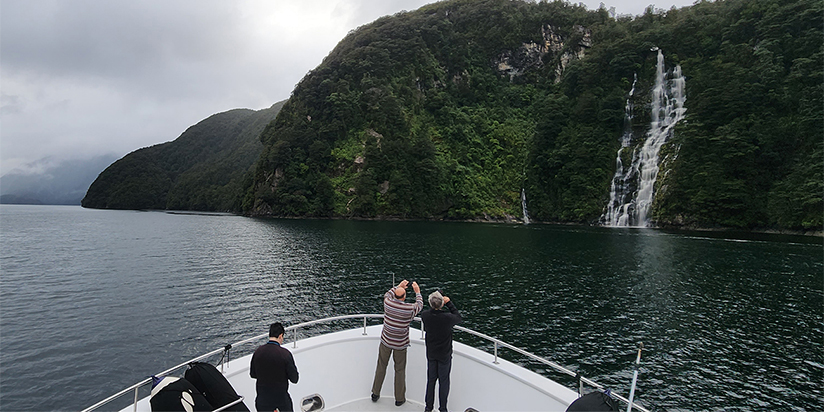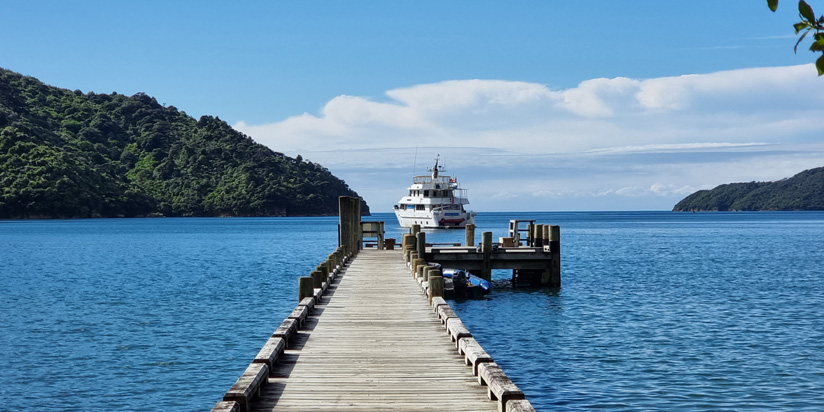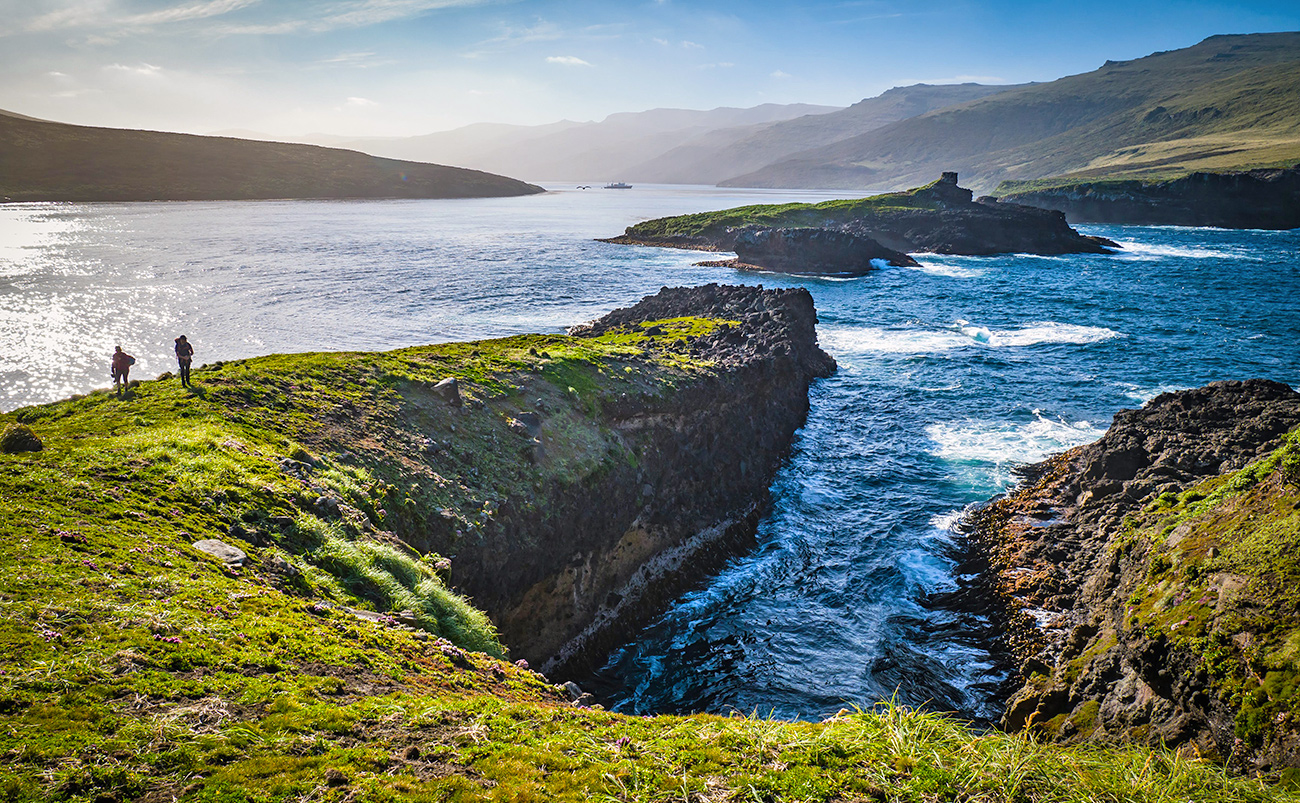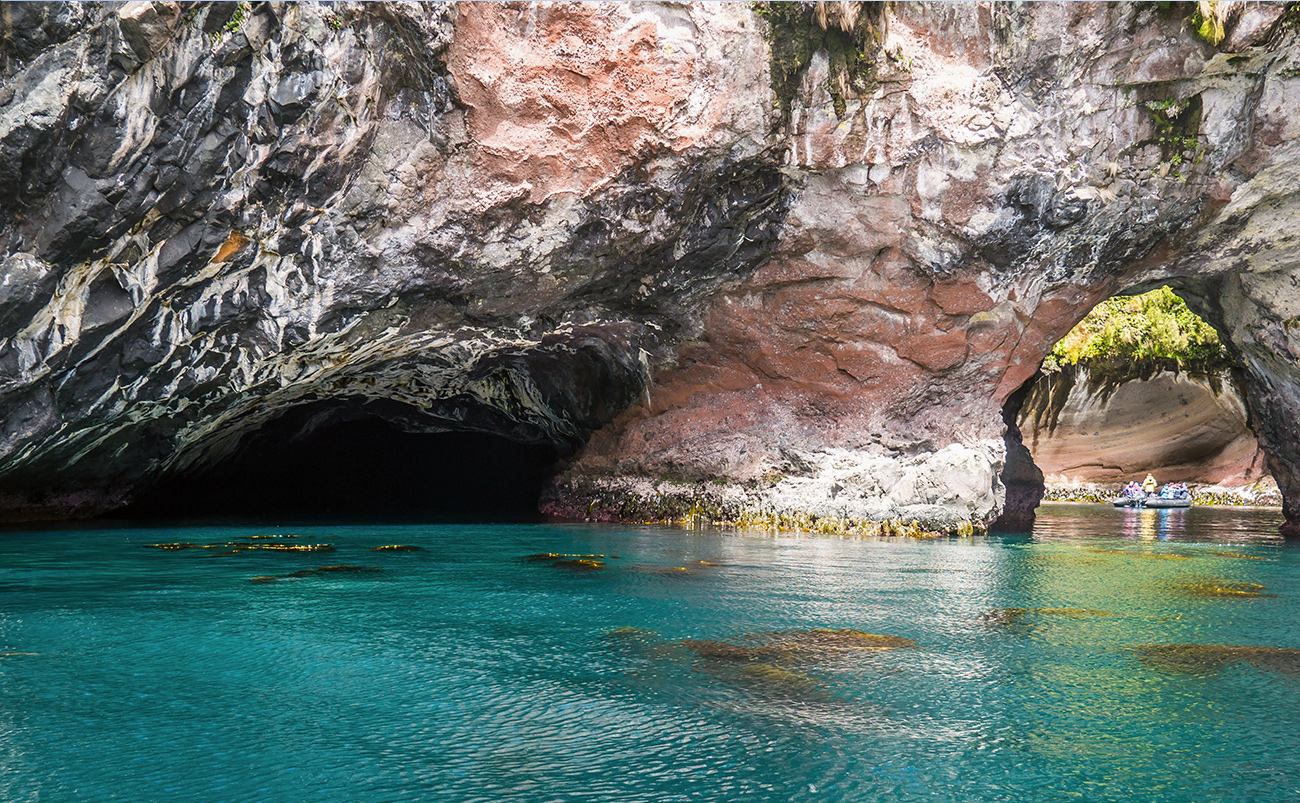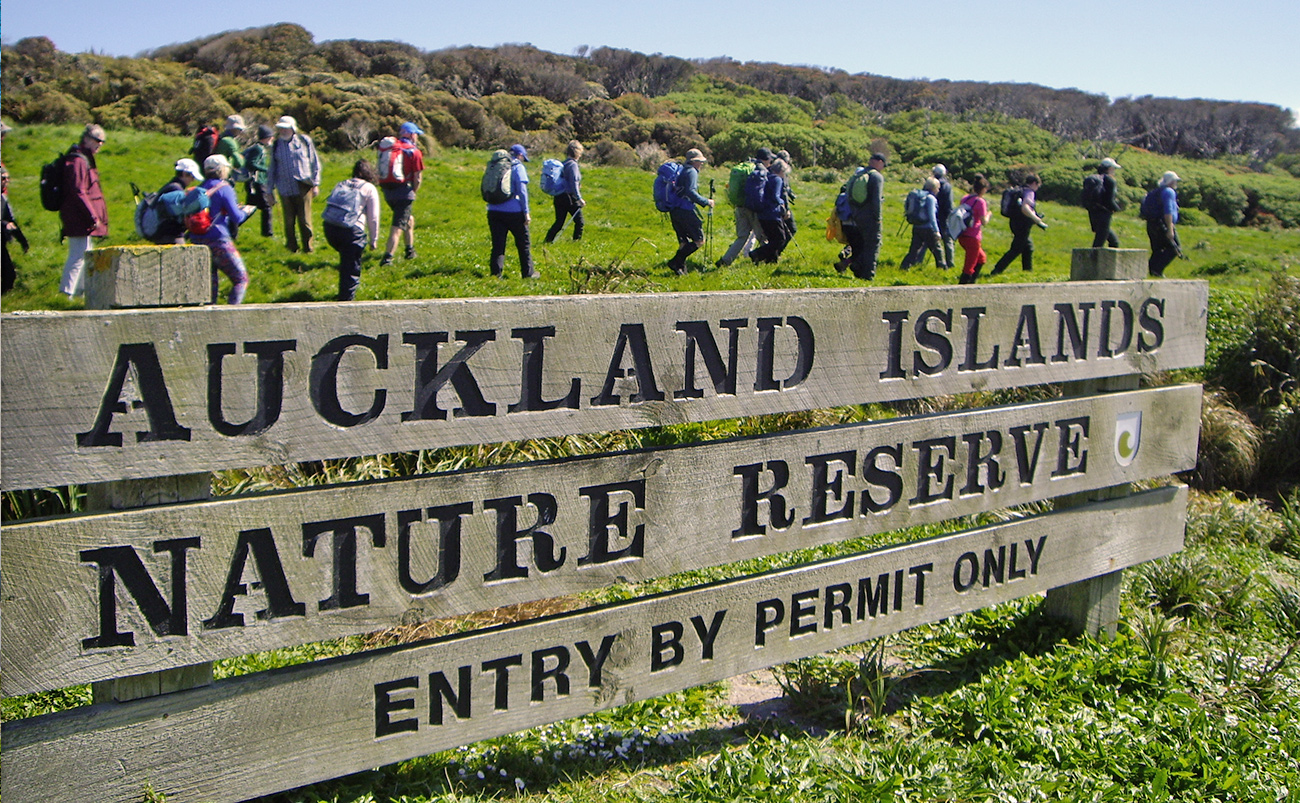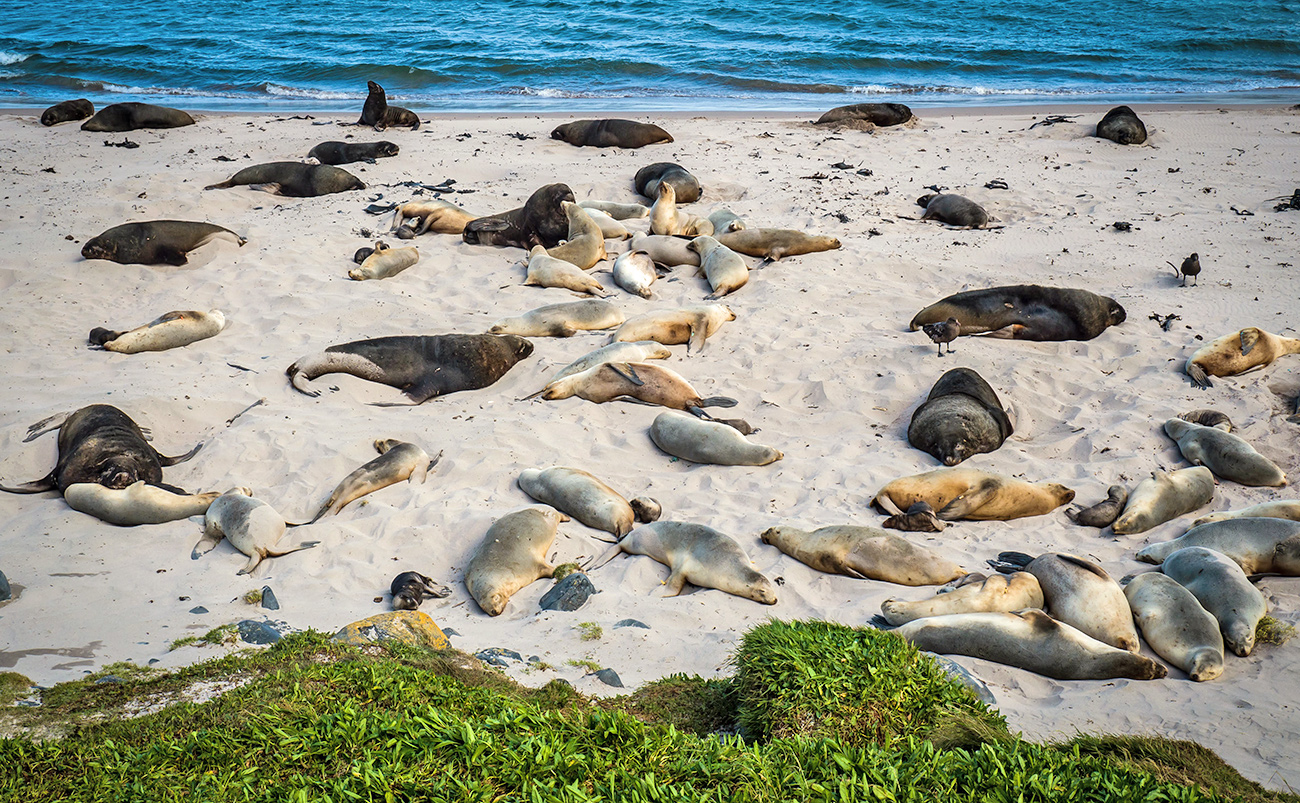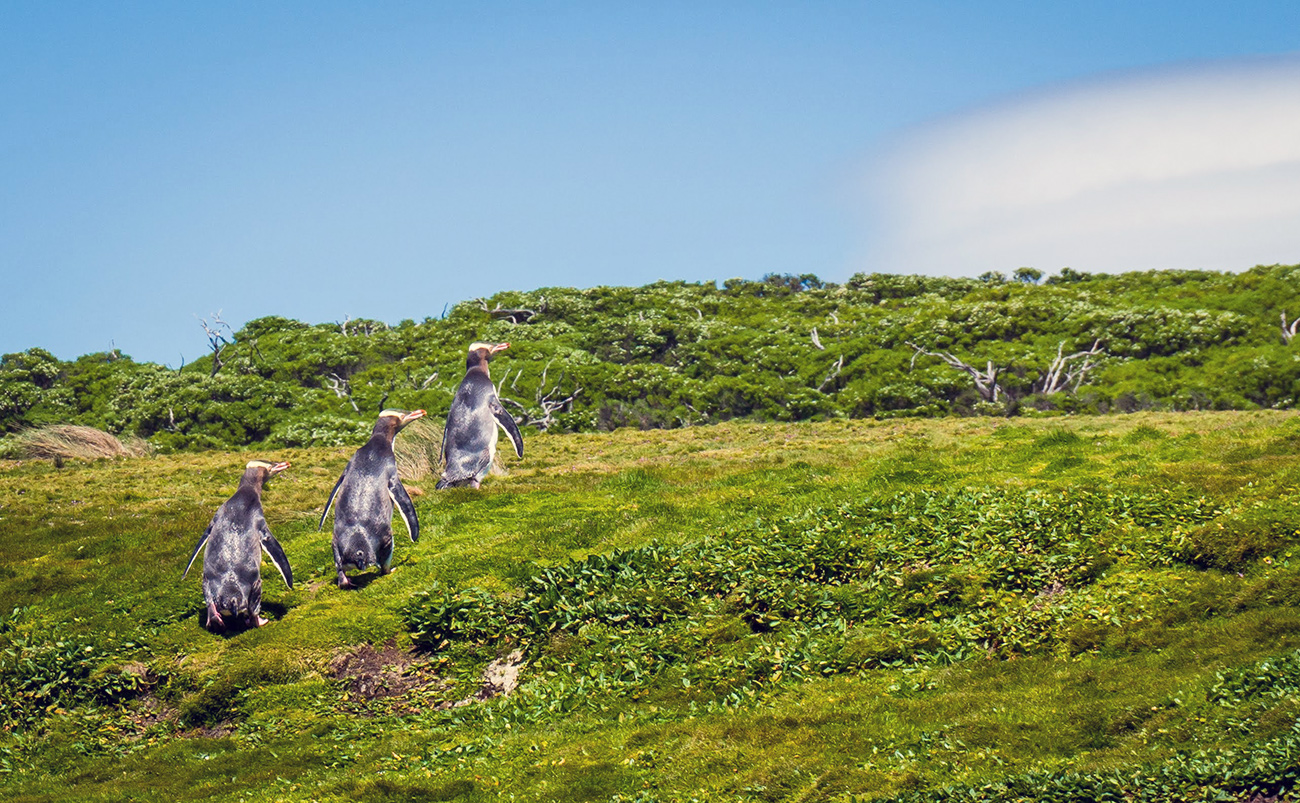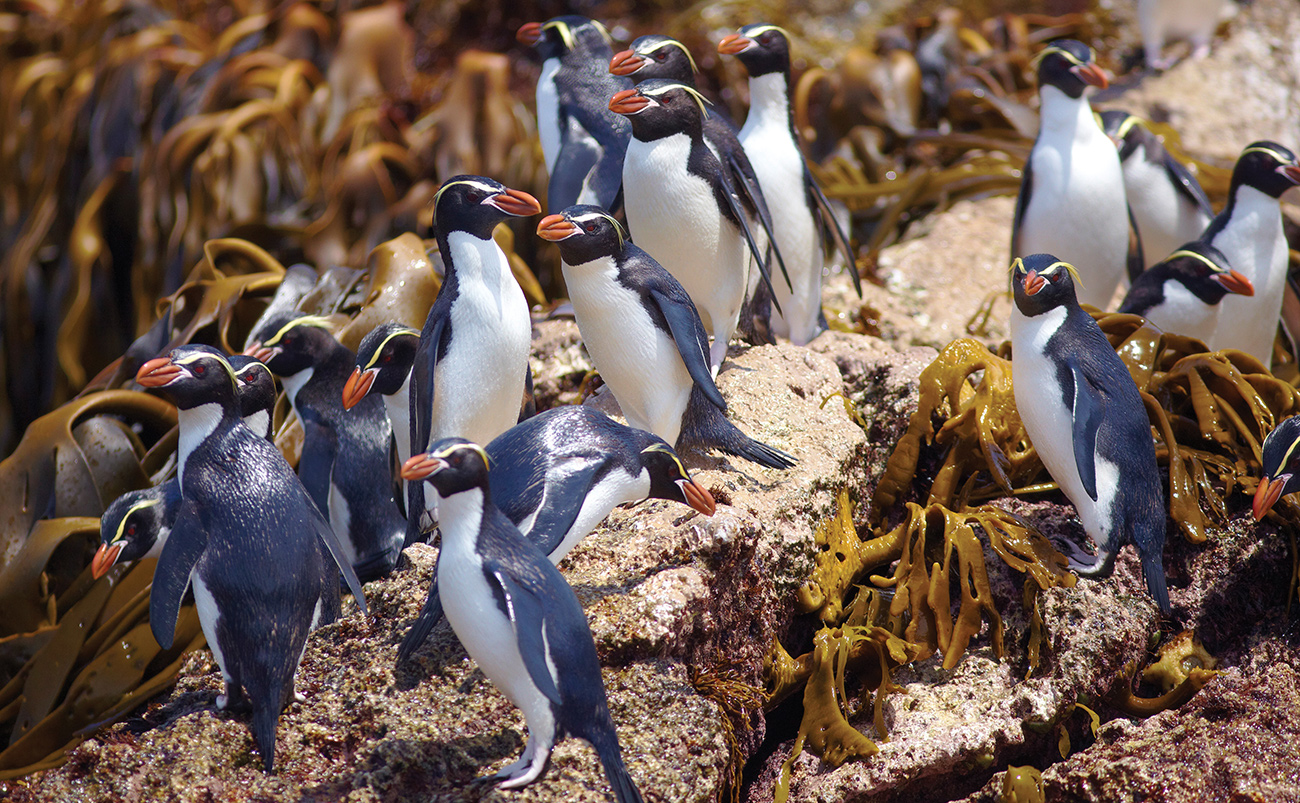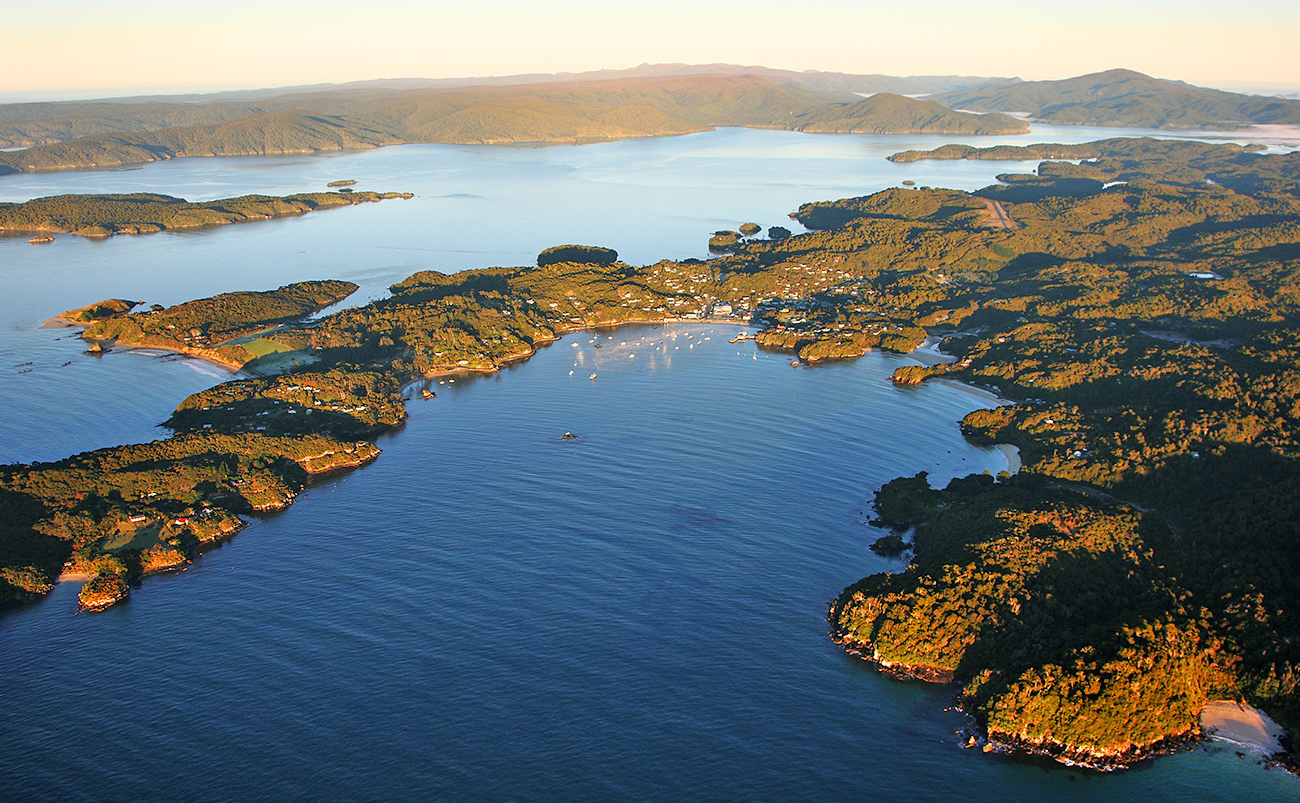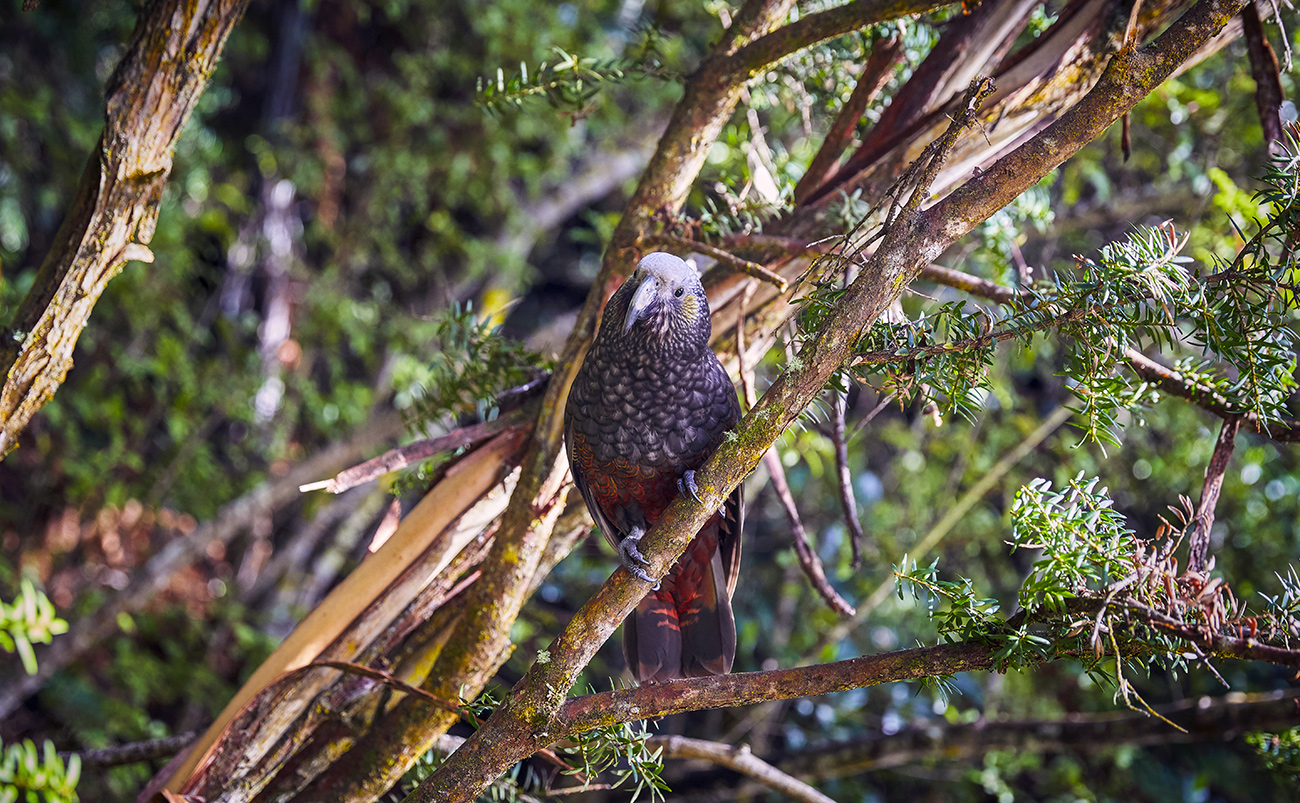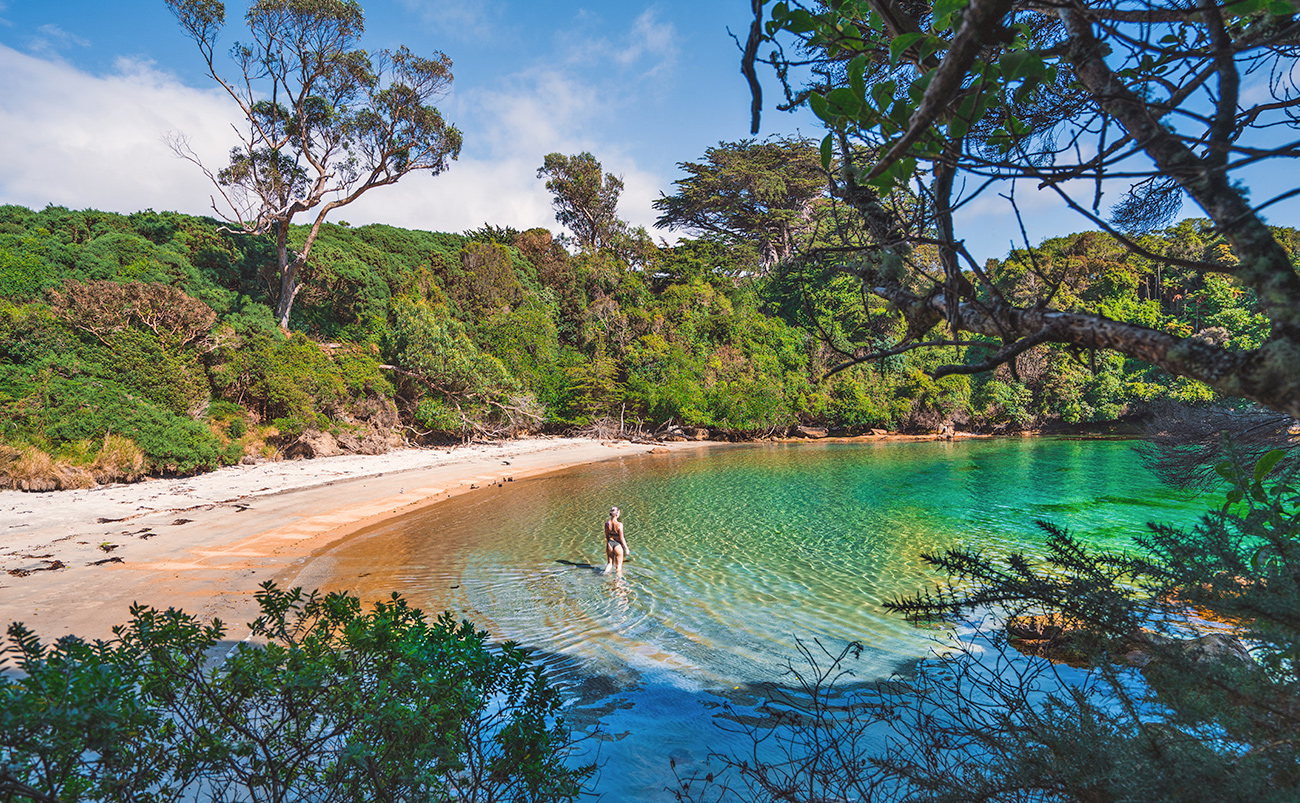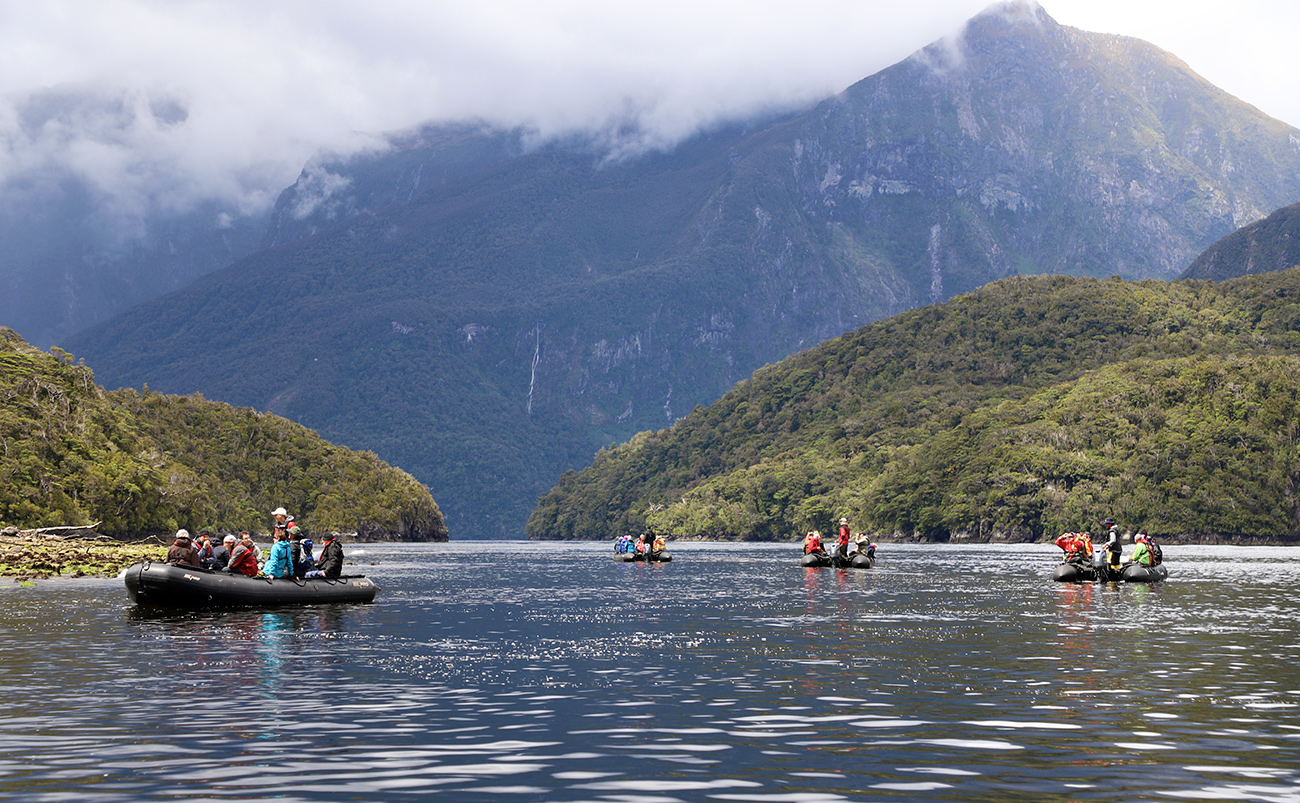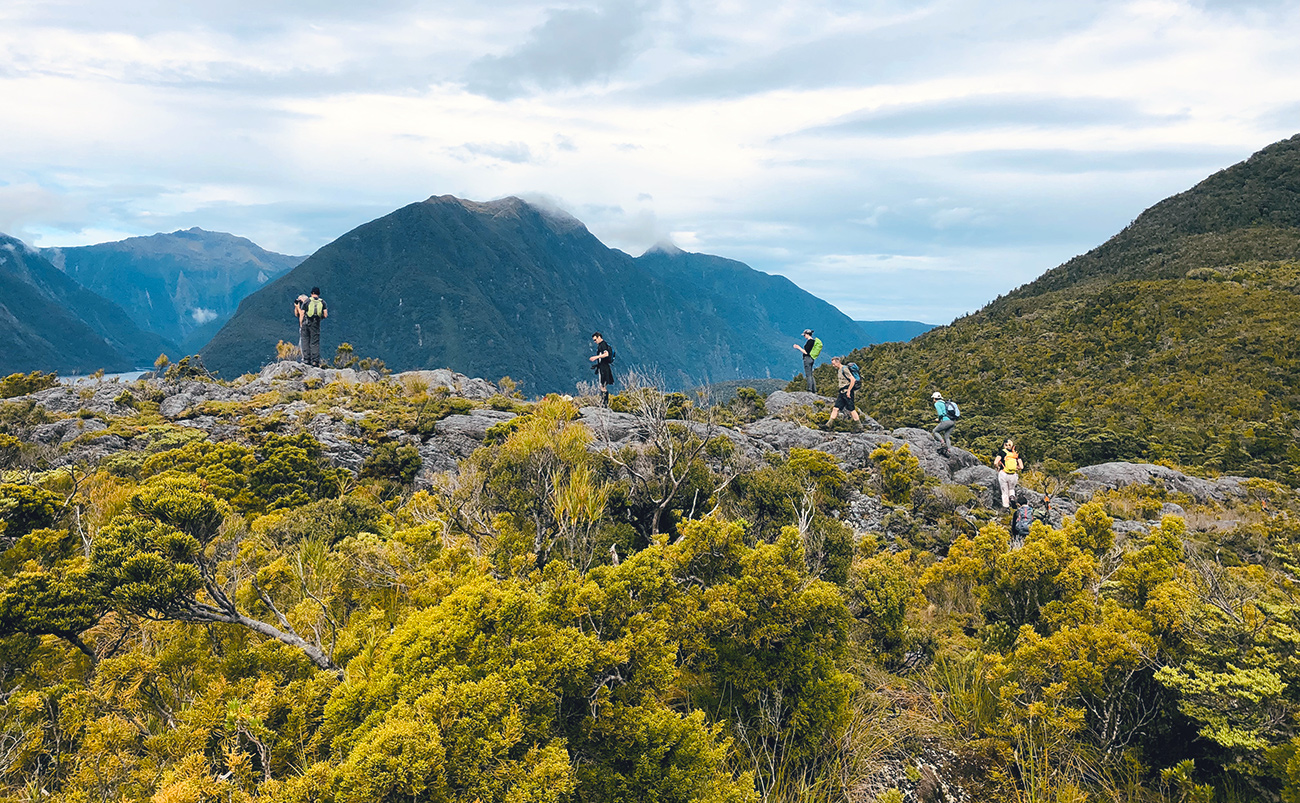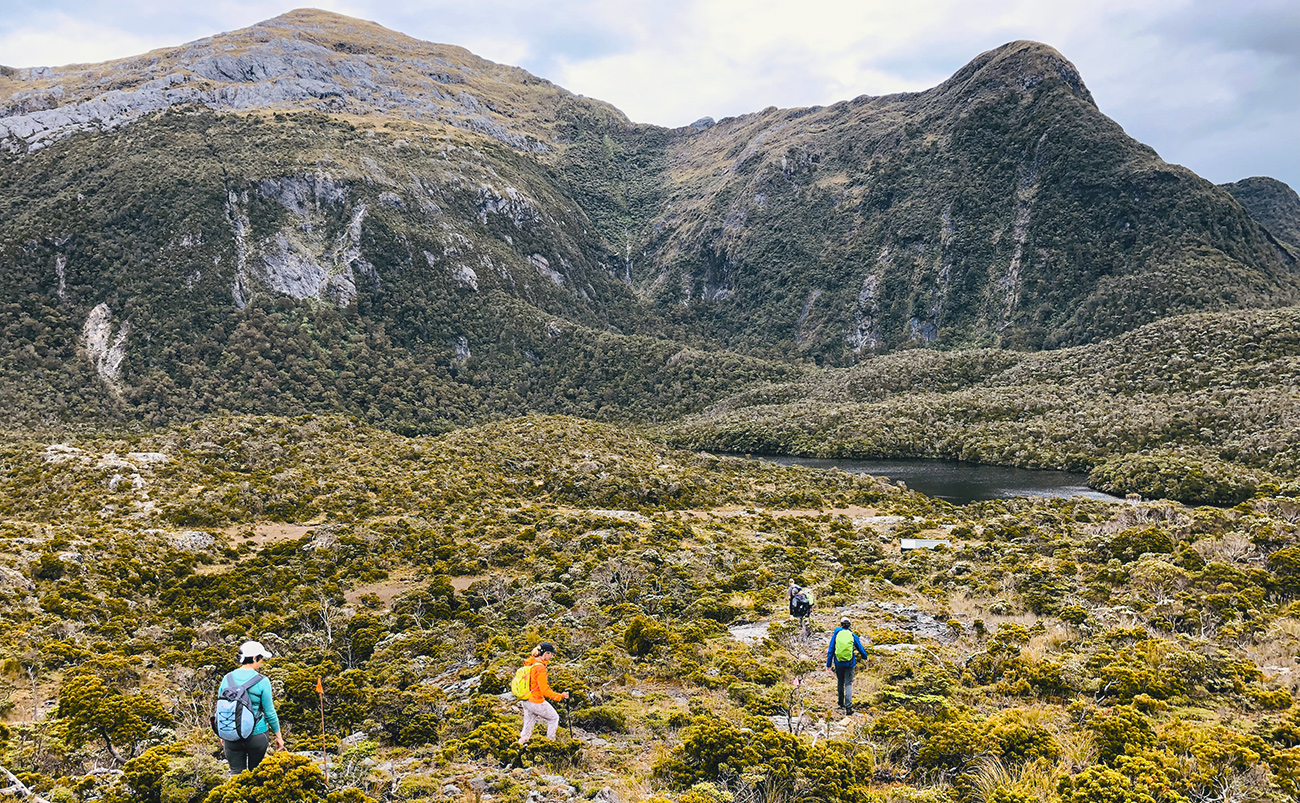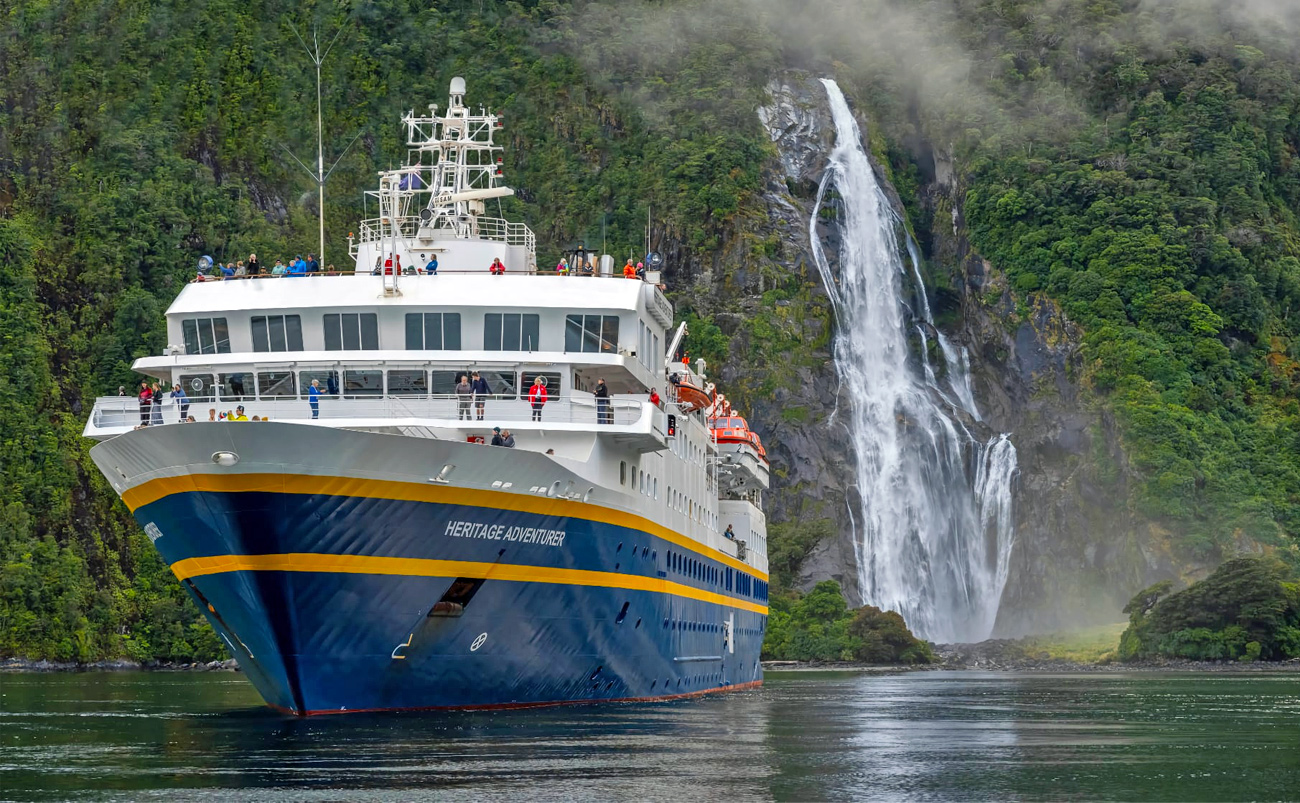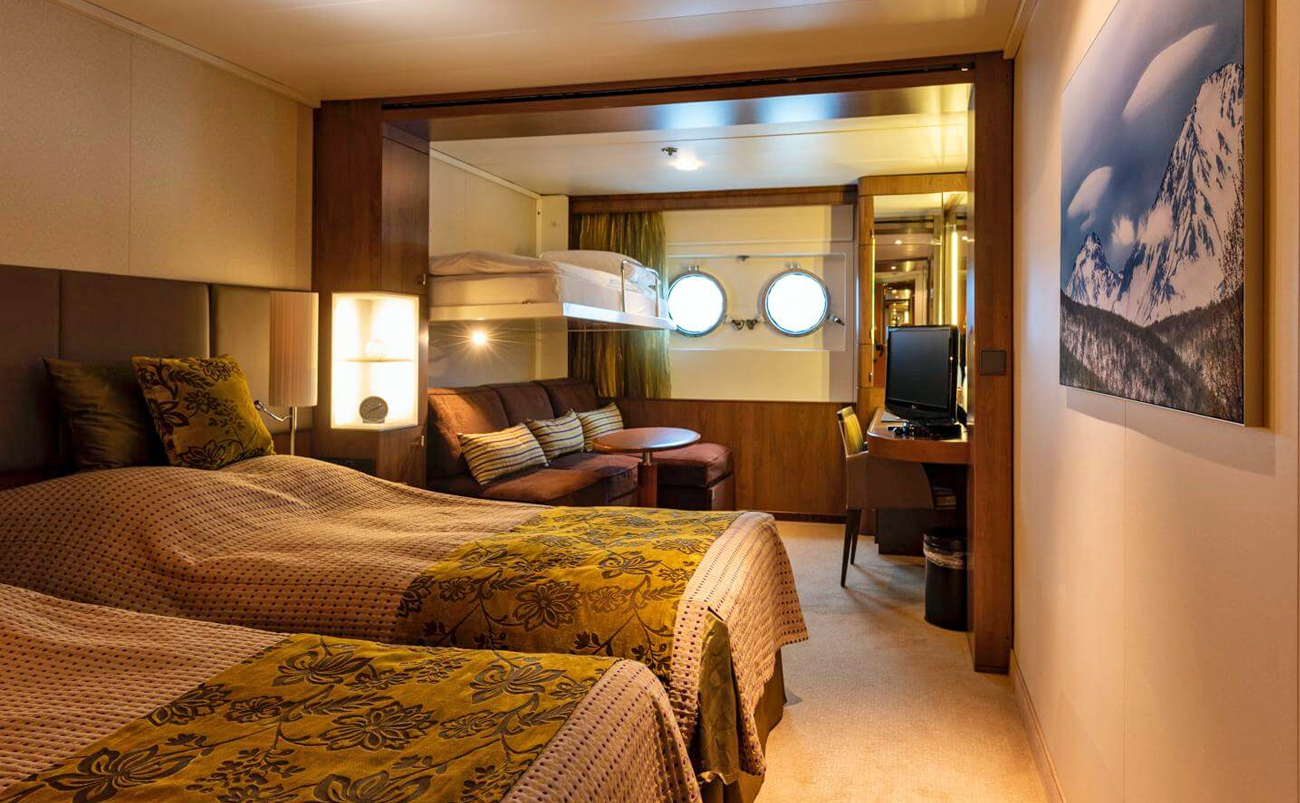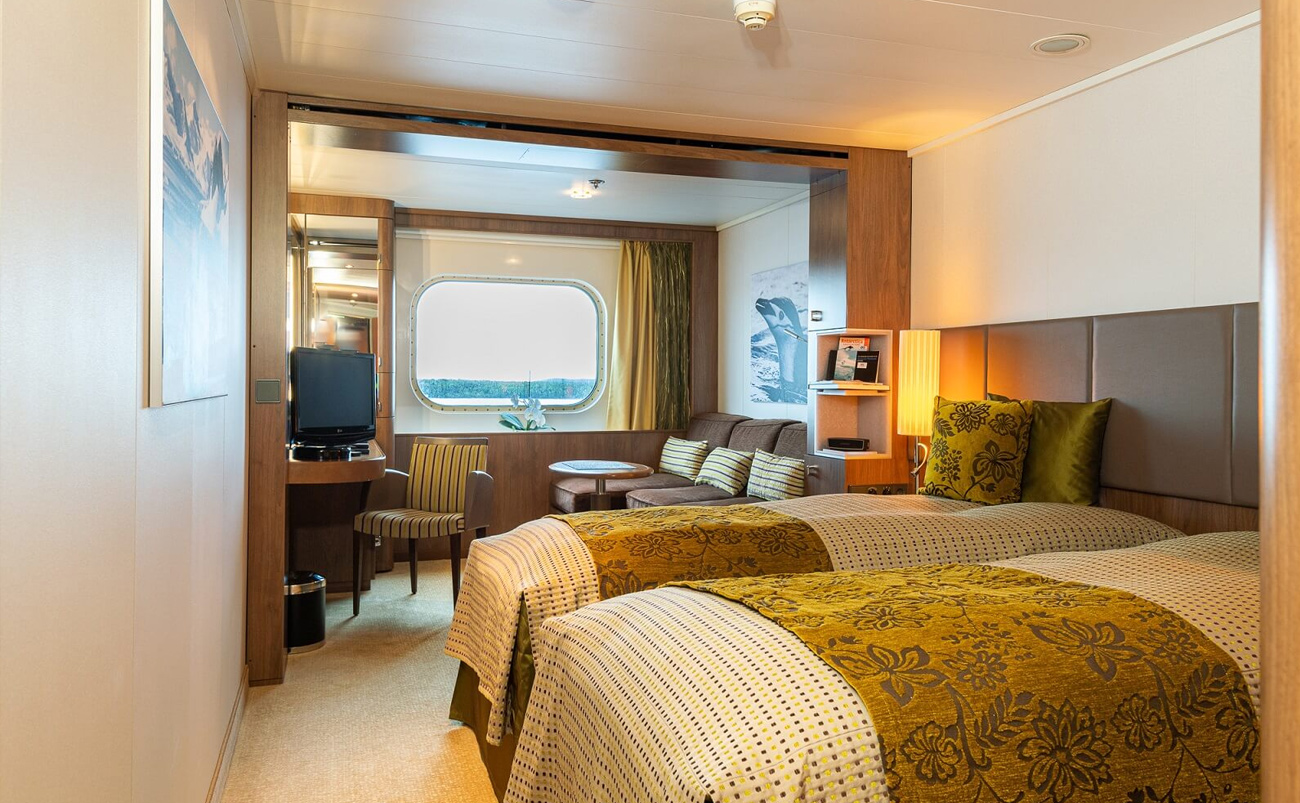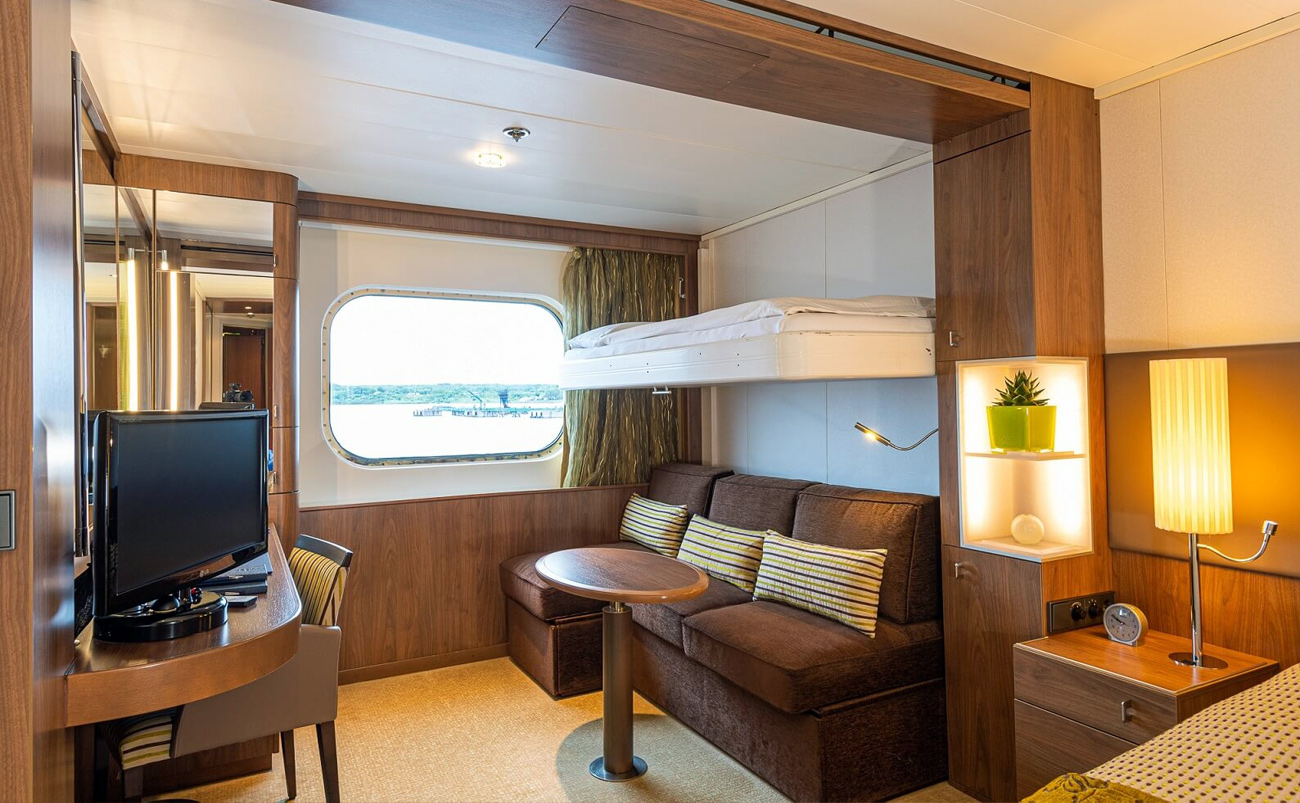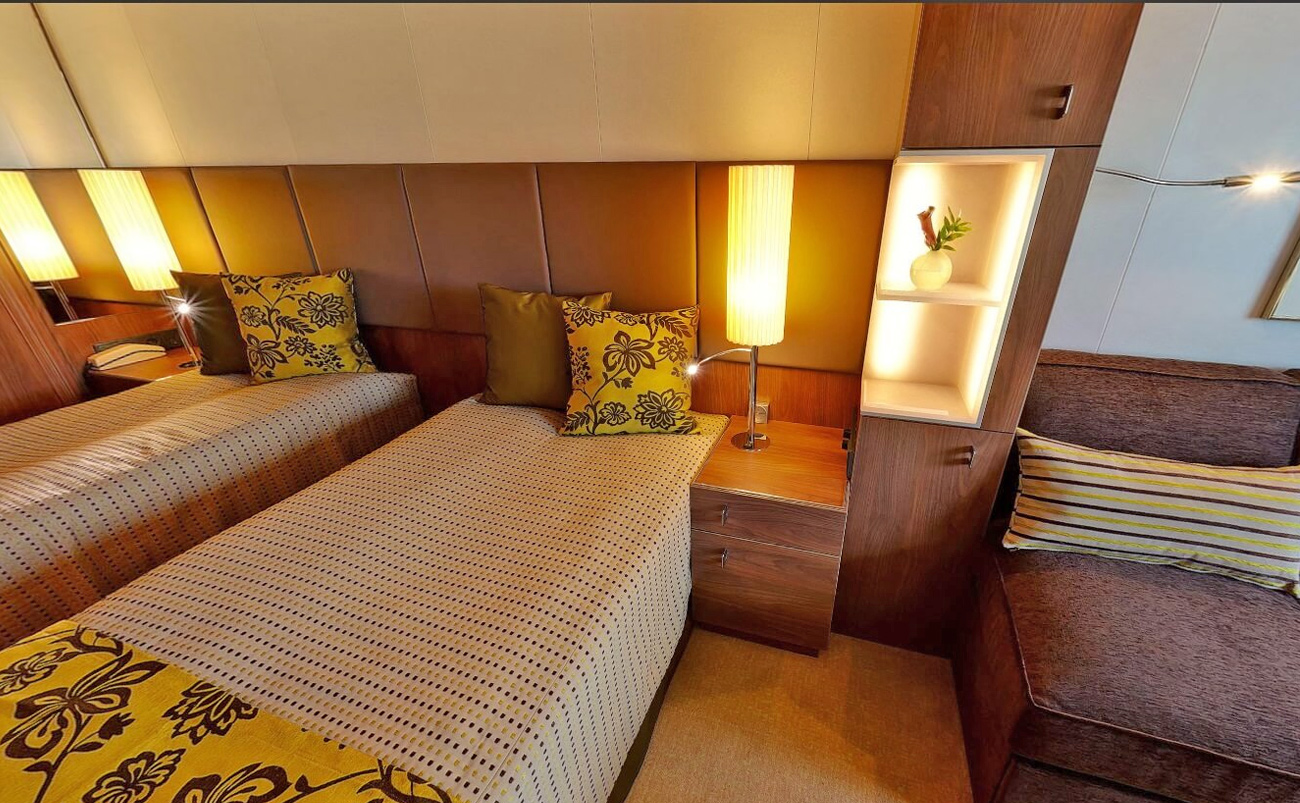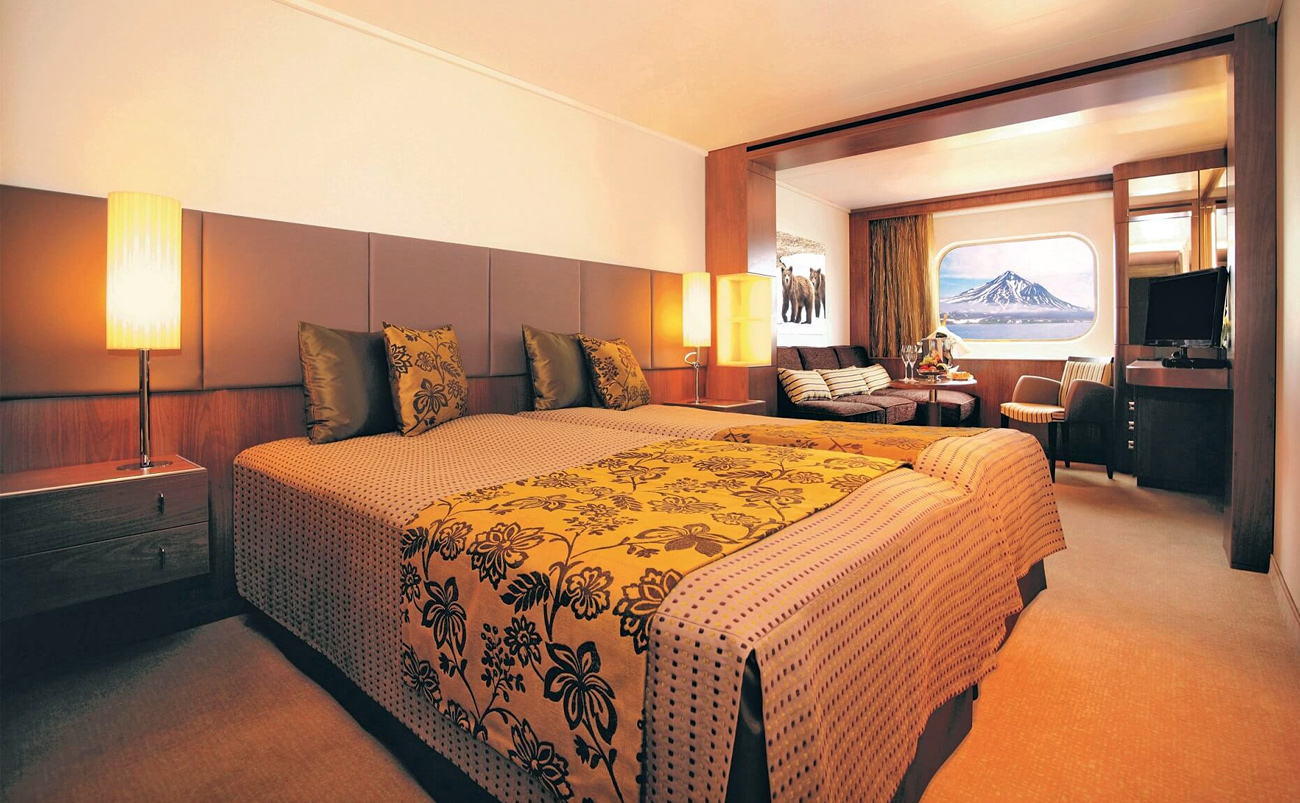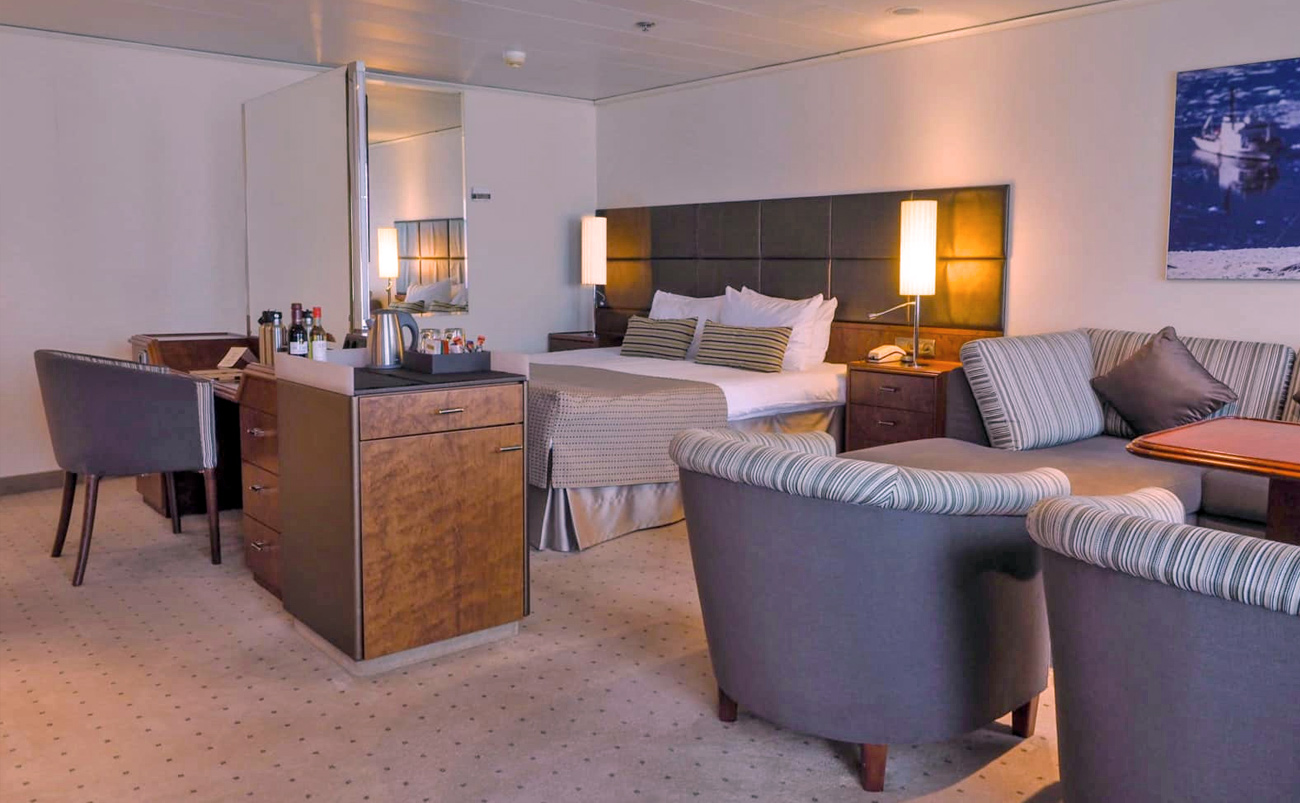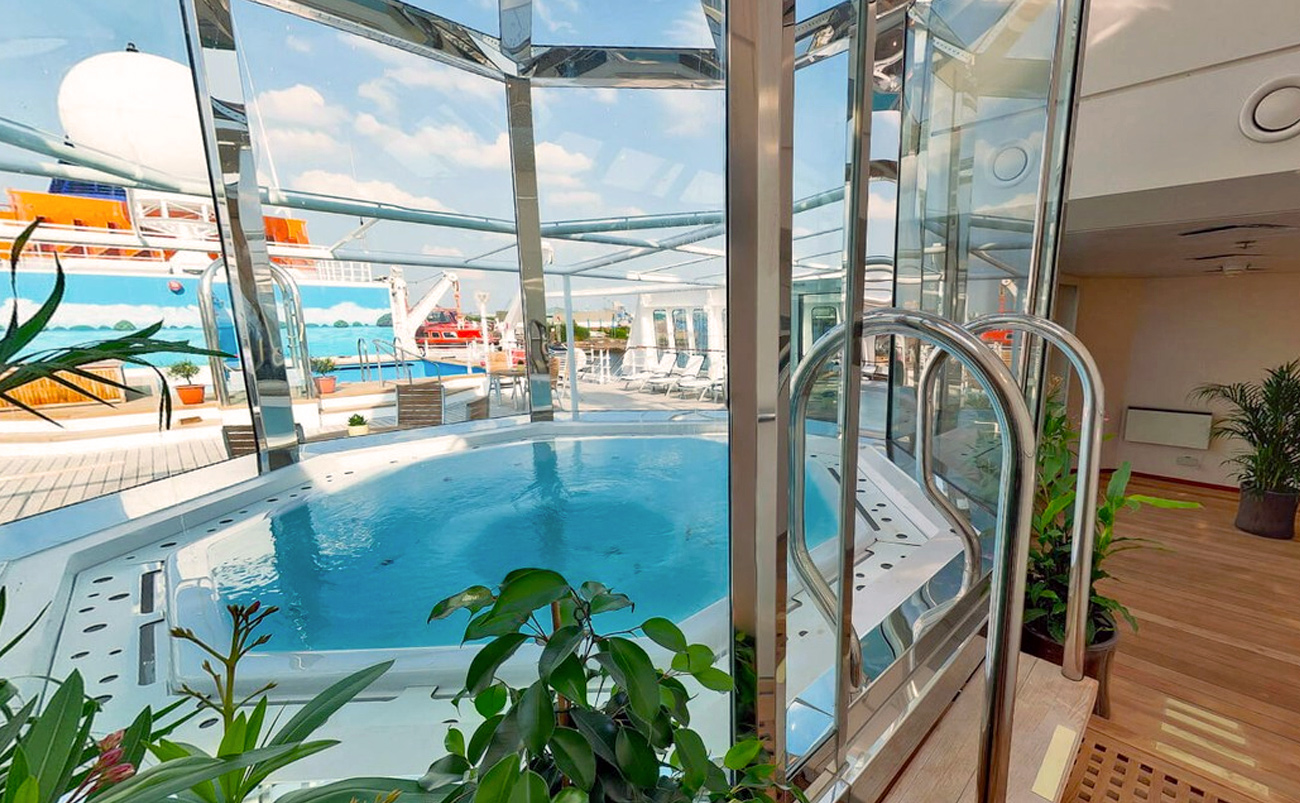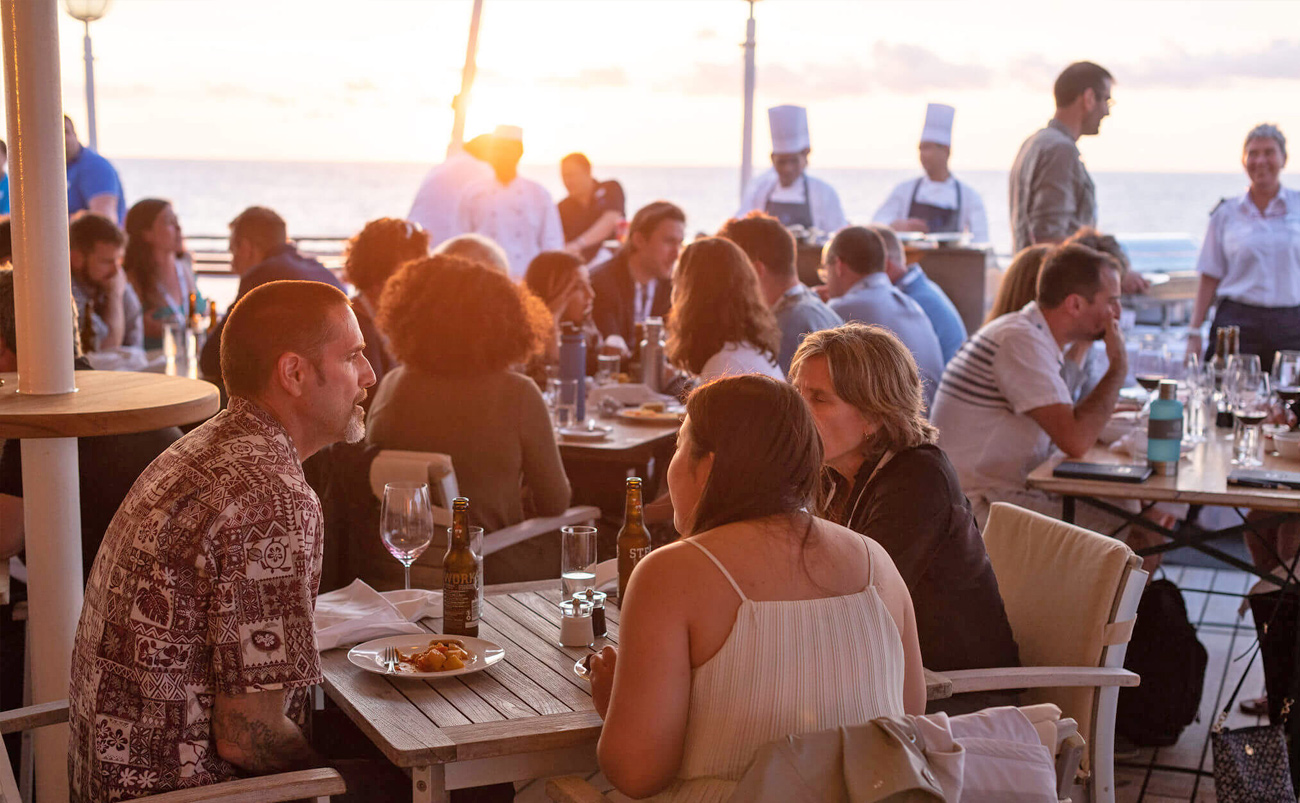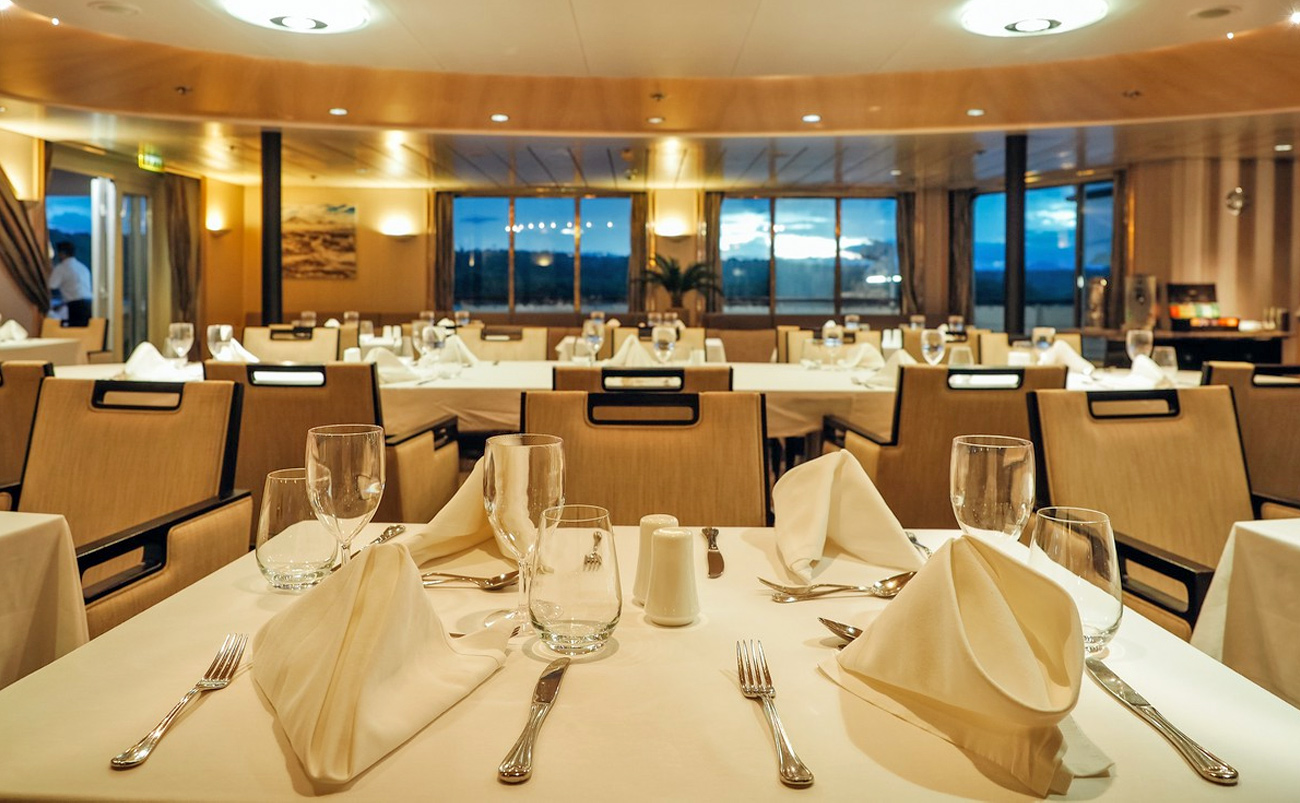Itinerary
Explore New Zealand’s Subantarctic Auckland, Snares and Campbell Islands along with the untamed wilderness of Fiordland’s ice-carved mountains, forests and fiords. Encounter threatened native species flourishing on Stewart Island’s Ulva Island on this iconic, 12-day expedition cruise of remote New Zealand.
Guests should make their way to the designated hotel where we will spend the first night of the expedition. This evening there will be an informal get-together at the hotel for dinner; an excellent opportunity to meet fellow adventurers on your voyage and some of our expedition team.
Today we enjoy breakfast in the hotel restaurant and have the morning free to explore Queenstown before returning to the hotel for lunch and departing for the Port of Bluff to embark your ship. You will have time to settle into your cabin and familarise yourself with the ship; we will also take the opportunity to conduct several safety briefings. You are invited to join the expedition team in the Observation Lounge and up on the Observation Deck as we set our course to Campbell Island and our adventure begins. We will sail past Ruapuke Island, formerly a local Māori stronghold supporting a population of over 200 people. We will also be able to see Stewart Island. Despite appearing quite small on most maps it is quite large and has a 700-kilometre coastline. Seabirds that we may encounter at this early point in the voyage include albatross, petrels, cormorants, gulls and Little Blue Penguins.
As we make our way through the Southern Ocean, we take the opportunity to learn more about the flora and fauna as we prepare for our arrival at Campbell Island. En route there are great birding opportunities which may include the Wandering Albatross, Royal Albatross, Black-browed Albatross, Light-mantled Sooty Albatross, Salvin’s Albatross, Campbell Island Albatross, Northern and Southern Giant Petrel, Sooty Shearwater and Little Shearwater. There should be plenty of petrels and again the hard to identify prion species. We can expect some of the best pelagic birding on this leg of the journey from Bluff to Campbell Island with great views during the crossing.
We have a full day to explore Campbell Island, New Zealand’s southernmost Subantarctic territory. Its history is as rich and varied as the other islands we visit. We will offer several options which will enable you to explore the island including an extended walk to Northwest Bay. There will also be an easier walk to the Col Lyall Saddle. All these options will allow you the opportunity and time to enjoy the Southern Royal Albatross which nest here in large numbers. We also visit areas of the island which contain outstanding examples of the megaherbs for which the island is renowned.
In the south of the archipelago there is a very large, sheltered harbour rich in human history including shipwrecks, treasure hunters, Coastwatchers and, of course, scientific parties. We plan to arrive mid-morning entering the harbour through the eastern entrance which is guarded on both sides by dramatic cliffs and rugged, tussock-covered hills. Our activities here today are weather dependent. We have several options. If the weather is fine, there will be an opportunity for the more energetic expeditioners to climb to the South West Cape and visit the Shy Mollymawk colony. This climb provides magnificent views in all directions, especially over the western entrance to Carnley Harbour, Adams Island and Western Harbour. For those not making the climb there will be an opportunity to Zodiac cruise along the coast of Adams Island, Western Harbour and Victoria Passage. Other options include the Tagua Bay Coastwatcher’s hut and lookout which was occupied during the Second World War. We could visit Epigwatt and the remains of the ‘Grafton’ which was wrecked here in 1864. Later this evening we will sail up the eastern coast, making our way to Port Ross in preparation for our landing at Enderby Island.
The Auckland Islands group was formed by two volcanoes which erupted some 10-25 million years ago. They have subsequently been eroded and dissected by glaciation creating the archipelago as we know it today. Enderby Island is one of the most beautiful islands in this group and is named after the same distinguished shipping family as one of our own vessels. This northern most island in the archipelago is an outstanding wildlife and birding location and is relatively easy to land on and walk around. Our plan is to land at Sandy Bay, one of three breeding areas in the Auckland Islands for the Hooker’s or New Zealand Sea Lion, a rare member of the seal family. During our day ashore there will be several options, some longer walks, some shorter walks and time to spend just sitting and enjoying the wildlife. The walking is relatively easy. A boardwalk traverses the island to the dramatic western cliffs, from there we follow the coast and circumnavigate the island. Birds that we are likely to encounter include the following species: Southern Royal Albatross, Northern Giant Petrel, Auckland Island Shag, Auckland Island Flightless Teal, Auckland Island Banded Dotterel, Auckland Island Tomtit, Bellbird, Pipit, Red-crowned Parakeet, Yellow-eyed Penguin and Light-mantled Sooty Albatross. There is also a very good chance of seeing the Subantarctic Snipe. Other more common species we will see include the Goldfinch, Song Thrush, Blackbird, European Starling, Red-billed Gull and Redpoll. On Derry Castle Reef we will look for migratory waders which could include Bar-tailed Godwit, Turnstone and possibly vagrants.
The closest Subantarctic Islands to New Zealand, they were appropriately called The Snares as they were once considered a hazard for sailing ships. Comprising of two main islands and a group of five islands called the Western Chain; they are uninhabited and enjoy the highest protection as Nature Reserves. It is claimed by some that these islands are home to more nesting seabirds than all the British Isles together. We plan to arrive in the morning, and as landings are not permitted, we will Zodiac cruise along the sheltered eastern side of the main island if the weather and sea conditions are suitable. In the sheltered bays, we should see the endemic Snares Crested Penguin, Snares Island Tomtit and Fernbirds. There are hundreds of thousands of Sooty Shearwaters nesting on The Snares; the actual number is much debated. Buller’s Albatross breed here from early January onwards. There will be opportunities to view the forests of large tree daisy Olearia lyallii which forms a canopy over much of the island group.
New Zealand’s third island is well off the usual beaten tourist track. It is a wonderfully tranquil place; the scenery of untouched bushland is stunning. We will enjoy a morning exploring Ulva Island which is rich in history and wildlife, being a predator-free island from 1997 the bird song and wildlife is some of the best. In Paterson Inlet you will have time to explore the sandy beaches of Boulder Bay and West End Beach or just enjoy some time around Post Office Bay and Sydney Cove. Some of the wildlife you may get to see while walking the tracks on Ulva Island include Stewart Island Robin, Stewart Island Weka, South Island Kaka, Kereru (wood pigeon), Mohua (yellowhead), Red Crowned Parakeet, Fantail, Bellbird and Tui. There are many more species that may also be seen, our knowledgeable expedition guides will be listening for bird calls and keeping a close watch in overhead canopies and the surrounding shrubs to identify further species. In the afternoon we turn our attention to other parts of Paterson Inlet and visit the historic Norwegian whaling station in Prices Inlet and Kaipipi Bay, where from 1923 and 1933 the Ross Sea Whaling Company of Sandefjord, Norway ran a repair base in Prices Inlet where chaser boats were serviced in preparation for the Antarctic summer. There may be an opportunity to explore quirky town centre Oban in Halfmoon Bay where a drink with a view can be enjoyed at the iconic South Sea Hotel.
We have three days to explore the incredible wilderness of fiords in the south-west corner of the South Island.
This is an area rich in history, majestic scenery and abundant in wildlife. Fiordland was well known to local Māori people, with the demi-god Tu-teraki-whanoa being said to have used his adze, Te Hamo, to carve out the region’s fiords. Bottlenose Dolphins, Fiordland Crested Penguins and Little Penguins are all residents of the fiords; during our time here, we will look out for them. Our schedule gives us the flexibility to visit as much as possible, areas we plan to visit during our time in Fiordland include Doubtful Sound, Dusky Sound and Acheron Passage, Astronomer’s Point and Pickersgill Harbour. Our final plan will be determined by the weather. The Captain and Expedition Leader will work hard to make the best use of our time in this incredible region of New Zealand, including areas that even few New Zealanders have visited.The isolation of Fiordland has been beneficial because its beauty remains unspoiled and its historic sites undisturbed.
On the evening of Day 11 we will enjoy a celebratory dinner with newfound friends and reflect on a wealth of new experiences from our adventure.
Early this morning we will arrive in the Port of Bluff. After a final breakfast we bid farewell to our fellow voyagers and take a complimentary coach transfer to either Invercargill or Queenstown Airports. In case of unexpected delays due to weather and/or port operations we ask you not to book any onward travel until after midday from Invercargill and after 3pm from Queenstown.
Please note: During our voyage, circumstances may make it necessary or desirable to deviate from the proposed itinerary. This can include poor weather and opportunities for making unplanned excursions. Your Expedition Leader will keep you fully informed.
